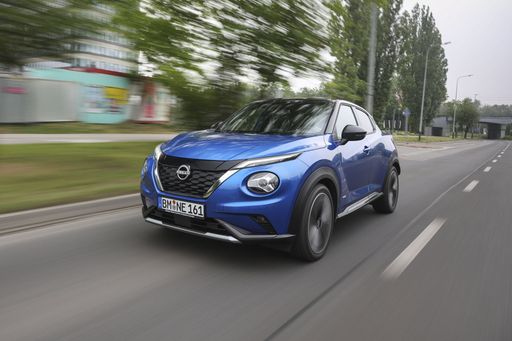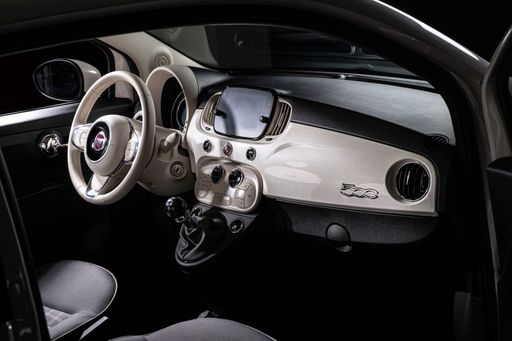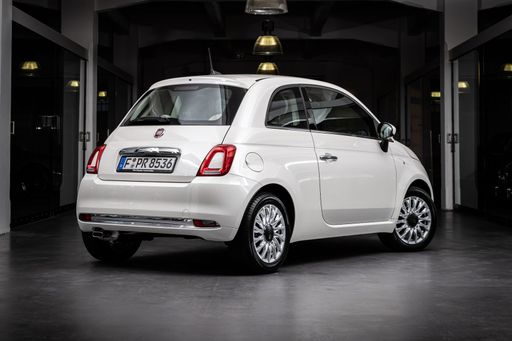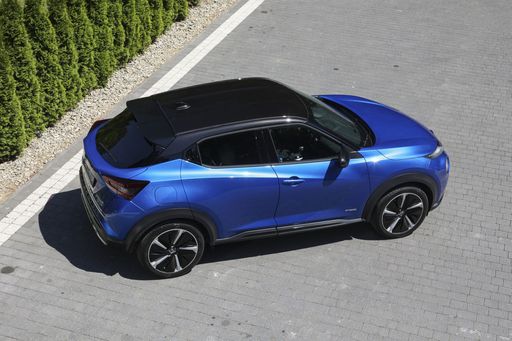Fiat 500 vs Nissan Juke – Which model is better for everyday use?
Compare performance, boot capacity, efficiency and price at a glance.
Find out which car is the better choice for you – Fiat 500 or Nissan Juke?
Costs and Efficiency:
Price and efficiency are key factors when choosing a car – and this is often where the real differences emerge.
Fiat 500 has a to a small extent advantage in terms of price – it starts at 18800 £, while the Nissan Juke costs 21400 £. That’s a price difference of around 2537 £.
Fuel consumption also shows a difference: Nissan Juke manages with 4.70 L and is therefore somewhat more efficient than the Fiat 500 with 5.30 L. The difference is about 0.60 L per 100 km.
Engine and Performance:
Under the bonnet, it becomes clear which model is tuned for sportiness and which one takes the lead when you hit the accelerator.
When it comes to engine power, the Nissan Juke has a somewhat edge – offering 143 HP compared to 118 HP. That’s roughly 25 HP more horsepower.
In acceleration from 0 to 100 km/h, the Fiat 500 is slightly quicker – completing the sprint in 9 s, while the Nissan Juke takes 10.10 s. That’s about 1.10 s faster.
In terms of top speed, the Nissan Juke performs somewhat better – reaching 180 km/h, while the Fiat 500 tops out at 155 km/h. The difference is around 25 km/h.
There’s also a difference in torque: Fiat 500 pulls slight stronger with 220 Nm compared to 200 Nm. That’s about 20 Nm difference.
Space and Everyday Use:
Whether family car or daily driver – which one offers more room, flexibility and comfort?
Seats: Nissan Juke offers a bit more seating capacity – 5 vs 4.
In curb weight, Fiat 500 is a bit lighter – 1141 kg compared to 1274 kg. The difference is around 133 kg.
In terms of boot space, the Nissan Juke offers decisively more room – 422 L compared to 185 L. That’s a difference of about 237 L.
In maximum load capacity, the Nissan Juke performs significantly better – up to 1305 L, which is about 755 L more than the Fiat 500.
When it comes to payload, Nissan Juke evident takes the win – 427 kg compared to 325 kg. That’s a difference of about 102 kg.
Who wins the race?
The Nissan Juke proves to be dominates this comparison and therefore becomes our DriveDuel Champion!
Nissan Juke is the better all-rounder in this comparison.
 @ Nissan Motor Corporation
@ Nissan Motor Corporation
Nissan Juke
Fiat 500
The Fiat 500 is a cheeky, retro‑styled city car that turns heads with its iconic looks and playful personality. Perfect for weaving through tight streets and easing into tiny parking spots, it’s aimed at buyers who want style and character more than grand touring prowess.
details @ Fiat / Stellantis Media
@ Fiat / Stellantis Media
 @ Fiat / Stellantis Media
@ Fiat / Stellantis Media
 @ Fiat / Stellantis Media
@ Fiat / Stellantis Media
Nissan Juke
The Nissan Juke is a pocket-sized crossover that refuses to blend in, with quirky styling and a cheeky stance that turns heads at every traffic light. It’s ideal for shoppers who value personality and nimble urban driving over maximum practicality, delivering surprising pep and a well-equipped feel for everyday fun.
details @ Nissan Motor Corporation
@ Nissan Motor Corporation
 @ Nissan Motor Corporation
@ Nissan Motor Corporation
 @ Nissan Motor Corporation
@ Nissan Motor Corporation
 @ Nissan Motor Corporation
@ Nissan Motor Corporation
 @ Fiat / Stellantis Media
@ Fiat / Stellantis Media
|
 @ Nissan Motor Corporation
@ Nissan Motor Corporation
|
|
|
|
Costs and Consumption |
|
|---|---|
|
Price
18800 - 30800 £
|
Price
21400 - 30100 £
|
|
Consumption L/100km
5.30 L
|
Consumption L/100km
4.7 - 6 L
|
|
Consumption kWh/100km
13 - 14.7 kWh
|
Consumption kWh/100km
-
|
|
Electric Range
190 - 331 km
|
Electric Range
-
|
|
Battery Capacity
21.3 - 37.3 kWh
|
Battery Capacity
0.60 kWh
|
|
co2
0 - 120 g/km
|
co2
107 - 136 g/km
|
|
Fuel tank capacity
-
|
Fuel tank capacity
46 L
|
Dimensions and Body |
|
|---|---|
|
Body Type
Hatchback
|
Body Type
SUV
|
|
Seats
4
|
Seats
5
|
|
Doors
3 - 4
|
Doors
5
|
|
Curb weight
1141 - 1475 kg
|
Curb weight
1274 - 1405 kg
|
|
Trunk capacity
183 - 185 L
|
Trunk capacity
354 - 422 L
|
|
Length
3631 - 3632 mm
|
Length
4210 mm
|
|
Width
1683 - 1684 mm
|
Width
1800 mm
|
|
Height
1527 - 1532 mm
|
Height
1593 mm
|
|
Max trunk capacity
440 - 550 L
|
Max trunk capacity
1237 - 1305 L
|
|
Payload
250 - 325 kg
|
Payload
405 - 427 kg
|
Engine and Performance |
|
|---|---|
|
Engine Type
Electric, Petrol MHEV
|
Engine Type
Petrol, Full Hybrid
|
|
Transmission
Automatic, Manuel
|
Transmission
Manuel, Automatic
|
|
Transmission Detail
Reduction Gearbox, Manual Gearbox
|
Transmission Detail
Manual Gearbox, Dual-Clutch Automatic, Automatic Gearbox
|
|
Drive Type
Front-Wheel Drive
|
Drive Type
Front-Wheel Drive
|
|
Power HP
65 - 118 HP
|
Power HP
114 - 143 HP
|
|
Acceleration 0-100km/h
9 - 16.2 s
|
Acceleration 0-100km/h
10.1 - 11.8 s
|
|
Max Speed
135 - 155 km/h
|
Max Speed
166 - 180 km/h
|
|
Torque
220 Nm
|
Torque
200 Nm
|
|
Number of Cylinders
3
|
Number of Cylinders
3 - 4
|
|
Power kW
48 - 87 kW
|
Power kW
84 - 105 kW
|
|
Engine capacity
999 cm3
|
Engine capacity
999 - 1598 cm3
|
General |
|
|---|---|
|
Model Year
2023 - 2025
|
Model Year
2024
|
|
CO2 Efficiency Class
A, D
|
CO2 Efficiency Class
D, E, C
|
|
Brand
Fiat
|
Brand
Nissan
|
What drivetrain options does the Fiat 500 have?
The Fiat 500 is offered with Front-Wheel Drive.
The prices and data displayed are estimates based on German list prices and may vary by country. This information is not legally binding.
